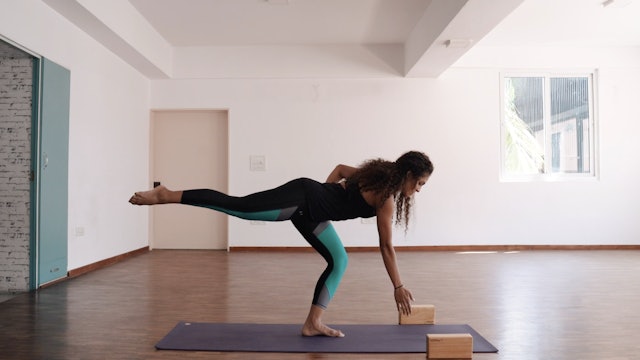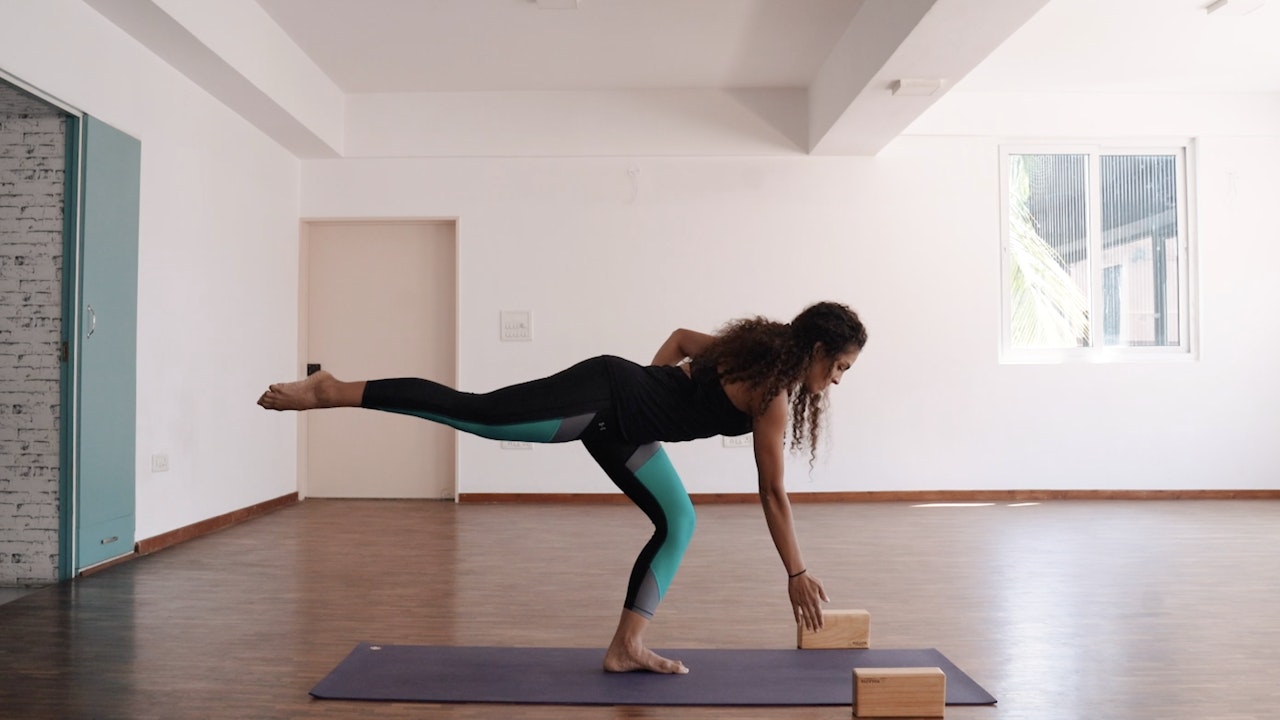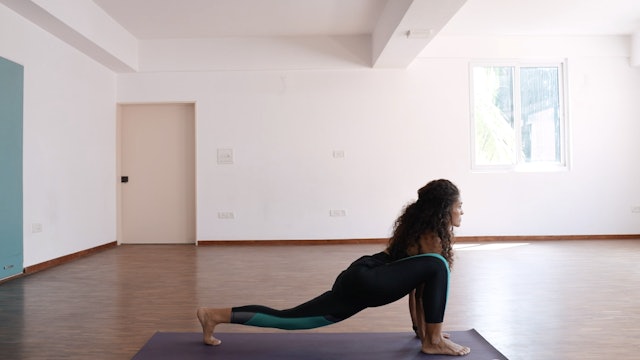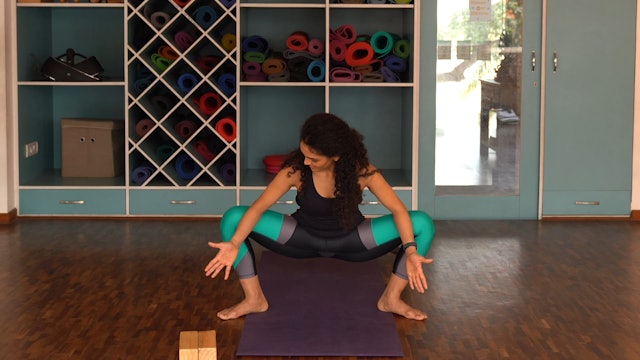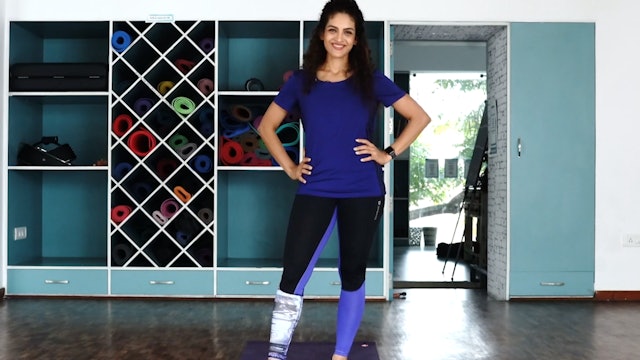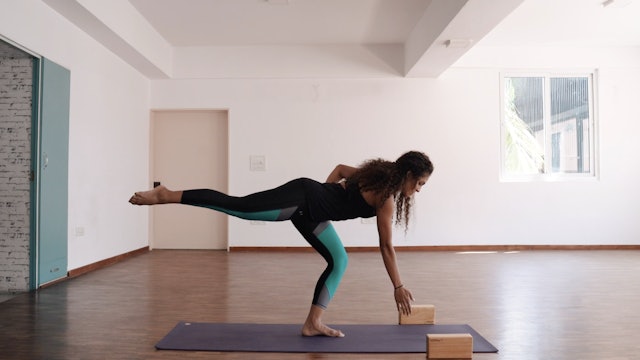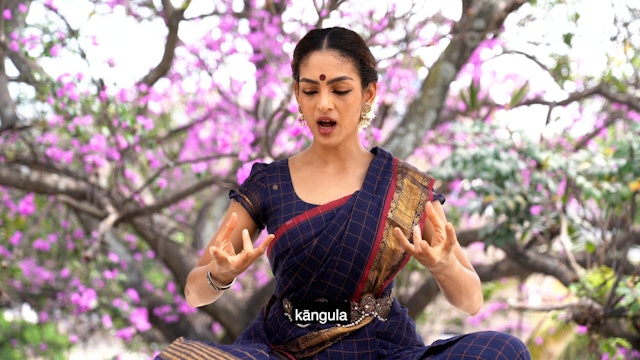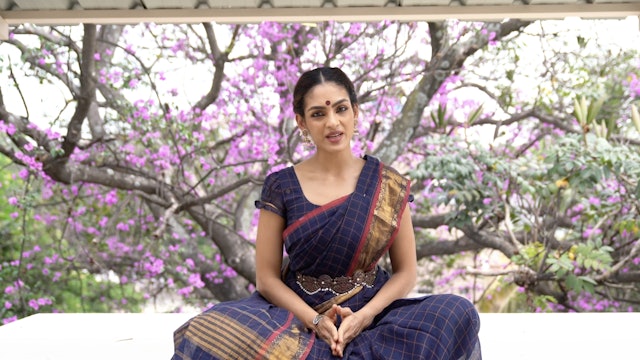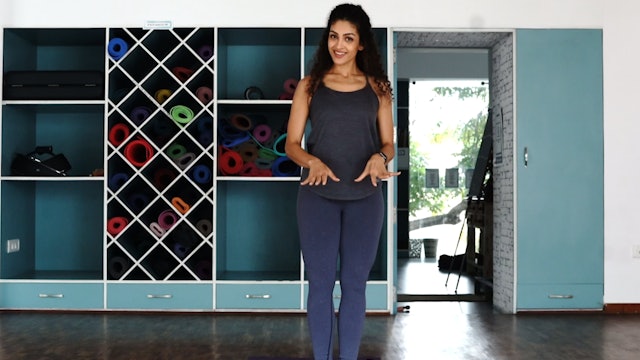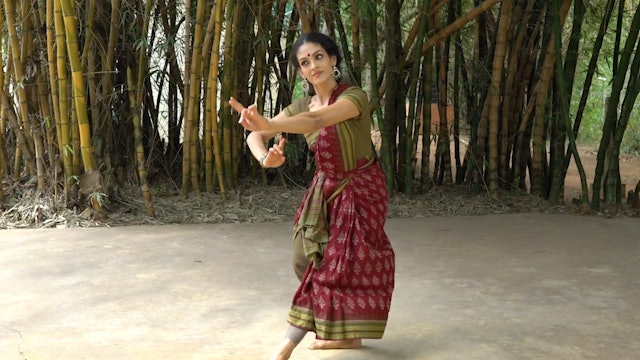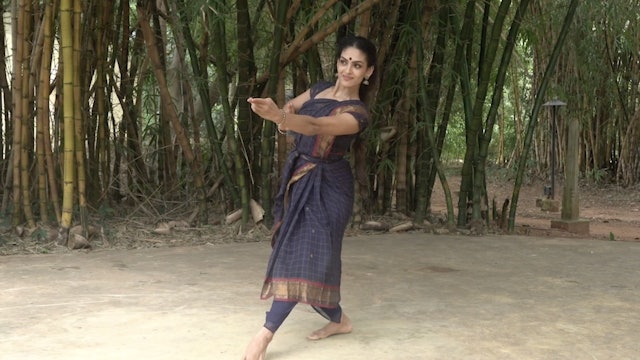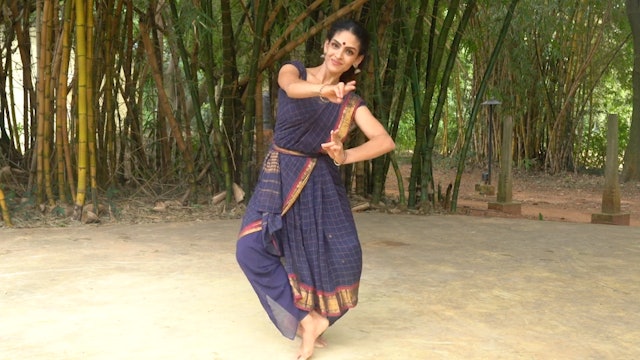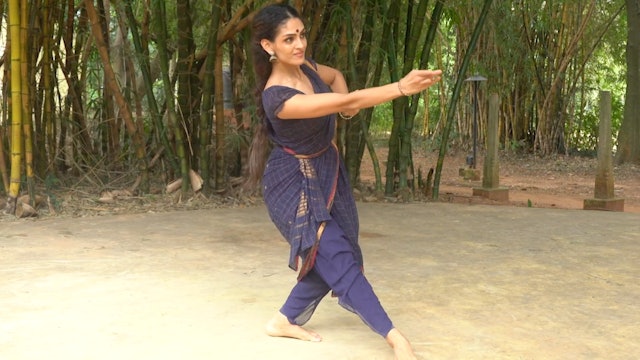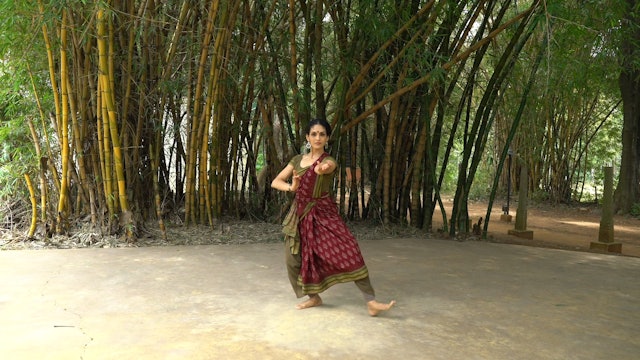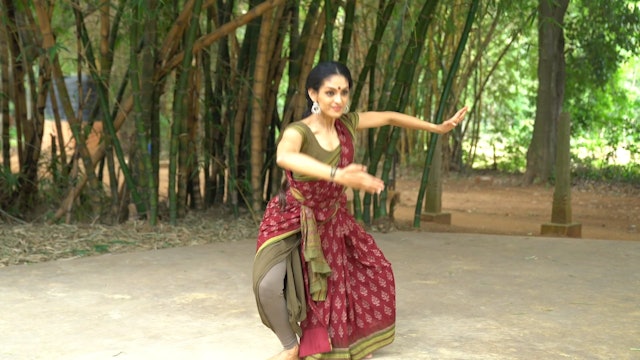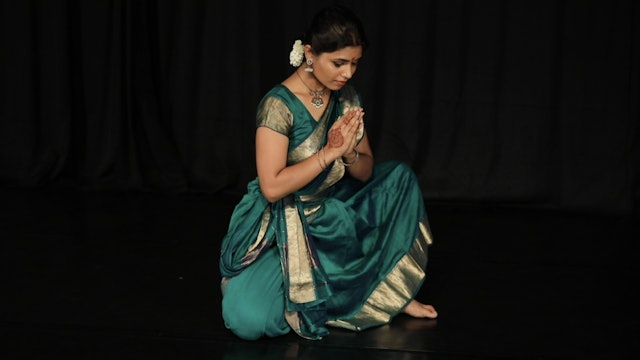-
Musical Warm-up 3
This Warm-up series reinforces ideas that have already been introduced in the previous instructed series. It is recommended to start on the musical warm-ups only once you have practised the instructed series over several months, so you already have internal awareness of alignment.
-
Hip Openers
This series can be practiced after a basic warm up, before beginning an Adavu practice.
The hip opener series will help you navigate through tight hips. It will help you mobilise your hips and enable you to push your thighs back while sitting in Araimandi. Please do this in combination with str...
-
Jumping junges & Squat jumps
As your leg strength grows and develops, it is important to introduce jumps within established movement patterns so you begin to challenge your abilities. The transition from static holds to dynamic transfer must be slow and mindful.
Please do this strength regimen after a proper warm-up and on...
-
Musical Series: Core and Quads
This sequence of exercises reinforces ideas that have already been introduced in the previous instructed series for the Quadriceps and core. It is recommended to start on the musical series only once you have practised the instructed series over several months, so you already have internal awaren...
-
Asamyukta Hasta
The Asamyuta hastas, as described in the Abhinaya Darpana are 28 in number.
These Hastas are used as embellishments in adavus as well as to communicate meaning gesturally, The Viniyogas in the Abhinaya Darpana describe a number of possible gestural implications for each Hasta.
Please refer to...
-
Samyukta Hasta
The Asamyuta hastas, as described in the Abhinaya Darpana are 28 in number.
These Hastas are used primarily communicate meaning gesturally, The Viniyogas in the Abhinaya Darpana describe a number of possible gestural implications for each Hasta.
Please refer to the Shloka below for pronunciat...
-
Cat jump
Please do this jump only after doing all the previous jumps in this series. It must be done in combination with the strength exercises to have maximum benefit.
Please commence this exercise only after doing hip openers, warming up your ankles, and doing some balance work with the standing and li...
-
Kartharee Adavu 1
The Kartharee adavu is a movement that begins with a jump, followed by the crossing of the legs. The name could come from the hasta that is used or from the fact that the legs cross.
The bends of the bodies vary in the various types of Kartharee adavu. We usually practice this Adavu to a three ...
-
Kartharee Adavu 2
The Kartharee adavu is a movement that begins with a jump, followed by the crossing of the legs. The name could come from the hasta that is used or from the fact that the legs cross.
The bends of the bodies vary in the various types of Kartharee adavu. We usually practice this Adavu to a three c...
-
Kartharee Adavu 3
The Kartharee adavu is a movement that begins with a jump, followed by the crossing of the legs. The name could come from the hasta that is used or from the fact that the legs cross.
The bends of the bodies vary in the various types of Kartharee adavu. We usually practice this Adavu to a three c...
-
Kartharee Adavu 4
The Kartharee adavu is a movement that begins with a jump, followed by the crossing of the legs. The name could come from the hasta that is used or from the fact that the legs cross.
The Last kartharee adavu uses a big jump to land with the legs crossed.
The arms move in a complete mandala, cir...
-
Teermana Adavu 1
The Theermana or Makutadavu, is placed at the end of a Korwe or Jathi in specific rhythmic patterns, to create an ending.
The leg is either placed outstretched directly in front or at a diagonal of 45 degrees. The foot is flexed and the heel strikes the floor. In the Raadha Kalpa method we begi...
-
Theermana Adavu 2, variation
The Theermana or Makutadavu, is placed at the end of a Korwe or Jathi in specific rhythmic patterns, to create an ending.
The leg is either placed outstretched directly in front or at a diagonal of 45 degrees. The foot is flexed and the heel strikes the floor. In the Raadha Kalpa method we begi...
-
Varnam, "Adi Shivane" : Part 5
Varnam, "Adi Shivane"
Raga: Todi
Adi Tala
Composer: K.N.Dandayudapani Pillai.
Choreography: Guru Narmada (Jathis) , Adapted by Rukmini Vijayakumar
Language: TamilThe Varnam speaks from the perspective of a Nayika that is longing to see Lord Shiva.
This video goes through the third Jathi of th...
-
Varnam, "Adi Shivane"
Varnam, "Adi Shivane"
Raga: Todi
Adi Tala
Composer: K.N.Dandayudapani Pillai.
Choreography: Guru Narmada (Jathis) , Adapted by Rukmini Vijayakumar
Language: TamilThe Varnam speaks from the perspective of a Nayika that is longing to see Lord Shiva.
P: Adi shivanaik-kANavE Ashai koNDEnaDi
nIti ...
